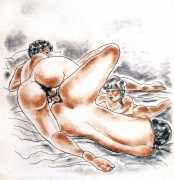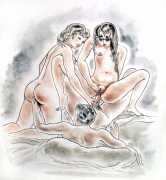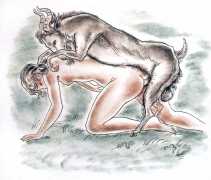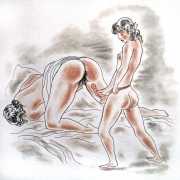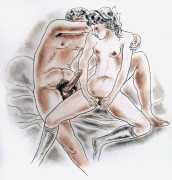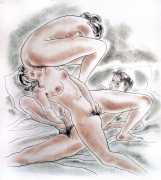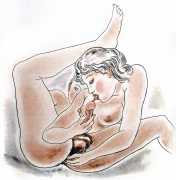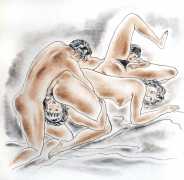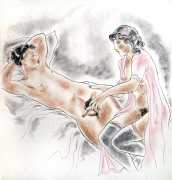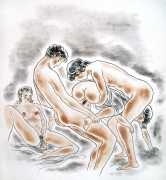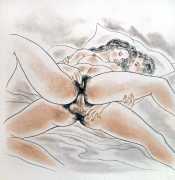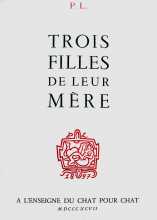 Pierre Louÿs was never afraid of taking risks in his prodigious output, and among the many secret manuscripts discovered after his death, subsequently auctioned off and scattered among collectors, was the manuscript of Trois filles de leur mère (The Three Daughters of Their Mother). In the introduction, Louÿs writes ‘This book is not a novel, it is a true story in every detail. I have not changed anything about the mother and her three girls, their ages, or their circumstances. The narrative is wholly inspired by the free relationship between the author and the wife of José Maria de Heredia and her three daughters.’
Pierre Louÿs was never afraid of taking risks in his prodigious output, and among the many secret manuscripts discovered after his death, subsequently auctioned off and scattered among collectors, was the manuscript of Trois filles de leur mère (The Three Daughters of Their Mother). In the introduction, Louÿs writes ‘This book is not a novel, it is a true story in every detail. I have not changed anything about the mother and her three girls, their ages, or their circumstances. The narrative is wholly inspired by the free relationship between the author and the wife of José Maria de Heredia and her three daughters.’
Written around 1910, describes in the first person the developing sexual relationships between the writer and a thirty-six year old prostitute, Teresa, and her three daughters, twenty-year-old Charlotte, Mauricette, fourteen and a half, and Lili, ten. The daughters, having learned well from their mother how to please themselves and their client, engage in an amazing variety of sexual exploits.
Just how autobiographical the book is is open to question, though Louÿs’ reference to Teresa de Heredia, whose daughter Louise he was married to for several years, gives it an edge of credibility. Beyond its possible autobiographical value, the work draws its power, its realistic dialogue and its love of transgression from the bourgeois universe to which the author belonged. According to André Pieyre de Mandiargues, who wrote a preface in to a a new edition in 1970 ‘This text is the ideal of the erotic genre, and constitutes masterpiece of Pierre Louÿs’ masterpiece.’ For those who can read French, there is a complete online text of Trois filles here.
Jean Berque’s illustrations for this edition are in his trademark simple style, using line and minimal colour to emphasise the interplay of bodies. As with his Dialogues illustrations, there is an emphasis on genitals and group interaction, but unlike other Trois filles illustrators Berque does not specifically suggest any underage sex in his drawings.
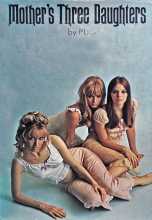 Trois filles de leur mère was first published by René Bonnel in 1927, and by the mid-1930s several illustrated editions had appeared. The first English translation, Mother’s Three Daughters, was published by Grove Press in 1969. Like Berque’s illustrations, the safe cover image gives no indication of the true age of the young participants …
Trois filles de leur mère was first published by René Bonnel in 1927, and by the mid-1930s several illustrated editions had appeared. The first English translation, Mother’s Three Daughters, was published by Grove Press in 1969. Like Berque’s illustrations, the safe cover image gives no indication of the true age of the young participants …
The Berque-illustrated edition of Trois filles was published A l’Enseigne du Chat pour Chat (‘The Cats’ Sign for Cats’). The edition is limited and numbered; though no total is given it was probably 350 copies.
We are very grateful to Talisman Fine Art (www.talismanfineart.com) for these illustrations.




